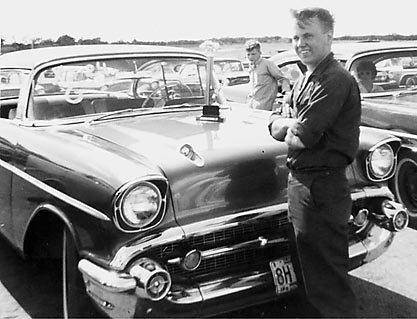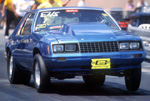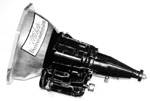
|
|||||||
|
The world was a very different place in 1963. The Beatles were a British club band, a first-class postage stamp cost four cents, and the Cold War was hotter than a header pipe. I was a typical "Weekend Warrior" with a full-time job, a hot rod '57 Chevy, a new wife, and a baby boy.
I never went to the drag races as a spectator. After all, it was a 200-mile trek to the nearest track. My interest in organized drag racing may have been sparked by a few speeding tickets on the street. I've always been a frugal person, and I certainly appreciated the prospect of racing without the additional expense of traffic court. I grew up on a farm in the Iron Range. When something broke, we fixed it. I learned about engines and mechanical devices by repairing farm equipment. I transferred that interest in mechanics to my hot rod. I also discovered that I enjoyed the competition of building a car that was faster than my rivals' machines. Several of my friends raced, and one day I simply decided to load up the family car and join them. My wife Arlene held our son Kurt in her arms while I drove to the drag strip. When we finally arrived, we had plenty of work to do before making the first run. I had to remove the differential from the rearend and replace it with one with a numerically higher gear ratio. I also slipped in a new pair of axles as insurance. If I broke an axle — and I often did — at least I'd have a spare to get us back home! My first "serious" race was a Division 5 points race where I finished as runner-up in Street eliminator. My '57 Chevy competed in the C/Modified Production class, and ran low 13 -second elapsed times. It really was a street car, and it was a real heavyweight — I think it tipped the scales at 3,600 pounds. It had a 327-cubic-inch Chevy small-block, a cross-ram intake manifold, and a roller cam. Most of the hotshots had four-speed transmissions, but I could only afford a Packard three-speed. I used a regular 10-bolt Chevy rearend, a design that was not exactly noted for its durability under the stress of drag racing. I figured out how to keep the ring and pinion gears from breaking, but I'd shear the ring gear bolts regularly. We didn't have the luxury of a truck or trailer, so I had to repair whatever broke before we could drive home and get to work on Monday morning. In the beginning, I raced to satisfy my ego. I wanted to prove that I could build a faster hot rod than my buddies. Years later I realized that racing could also support my family. I became a professional racer in 1975, and this year I'm celebrating my Silver Anniversary in Pro Stock. It's hard to believe it all began with a '57 Chevy at Minnesota Dragway!
Picture Courtesy of Warren Johnson |
|
||||||
|
Copyright 1999-2001, Drag Racing Online and Racing Net Source |
|
||||||




